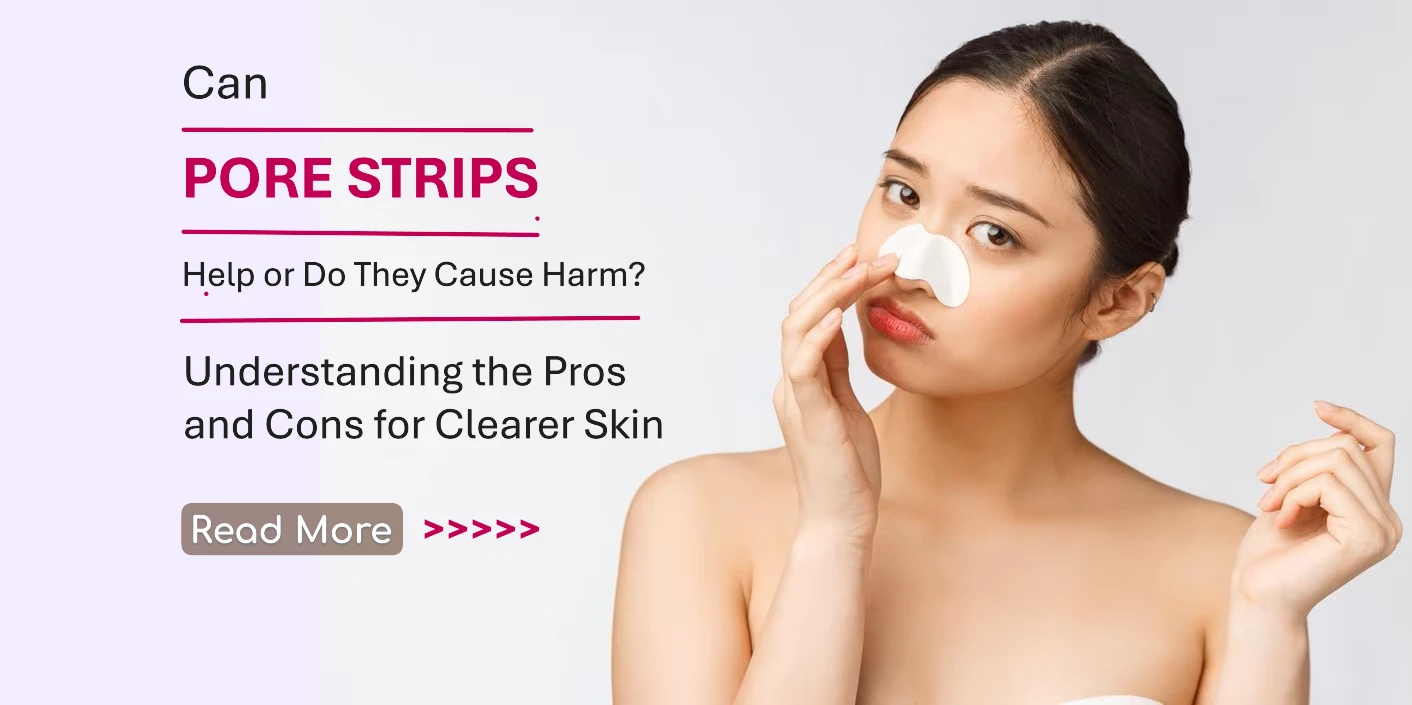Can Pore Strips Help or Do They Cause Harm? Understanding the Pros and Cons for Clearer Skin
Can Pore Strips Help or Do They Cause Harm? Understanding the Pros and Cons for Clearer Skin
Pore strips are a popular quick fix in many skincare routines, especially for those bothered by blackheads on the nose or chin. These sticky strips promise an instantly clearer look by lifting away debris from clogged pores. But do they really help your skin in the long run—or could they actually do more harm than good? Let’s explore how pore strips work, what they can (and can’t) do, and why it’s important to use them wisely.
How Pore Strips Work
Pore strips are adhesive pads that stick to the skin and, when pulled away, remove the top layer of blackheads, oil, and dead skin cells. The satisfying result is often visible on the strip itself—small dark plugs that look like they’ve been extracted from the pores.
This immediate visual payoff is one reason why pore strips remain so popular, but it’s important to understand what’s really happening beneath the surface.
The Benefits of Pore Strips
-
Instant visual improvement: Pore strips can make pores appear temporarily cleaner and less noticeable by removing surface-level blackheads and debris.
-
Smoother texture: By clearing the top layer of dead skin and sebum, the skin may feel softer and smoother right after use.
-
Easy to use: They require no special tools, making them a convenient option before events or photos.
The Limitations and Drawbacks
Despite the short-term satisfaction, pore strips have significant limitations and potential downsides:
-
They don’t address the root cause: Pore strips only remove debris from the surface. They don’t reduce oil production, balance skin, or prevent future blackheads from forming.
-
Possible irritation: The adhesive can strip away natural oils and even remove fine hair, sometimes leading to redness, irritation, or sensitivity—especially for those with dry, sensitive, or rosacea-prone skin.
-
Risk of damaging the skin barrier: Frequent or aggressive use may weaken the skin barrier, making the skin more prone to dryness, inflammation, or even breakouts.
-
Temporary results: Because pore strips don’t treat underlying issues, pores may refill quickly, sometimes within a day or two.
Safer Alternatives to Keep Pores Clear
For lasting results, dermatologists often recommend incorporating gentle, evidence-based ingredients and habits into your skincare routine:
-
Salicylic acid (BHA): Helps dissolve oil inside pores, preventing blackheads and whiteheads.
-
Retinoids: Increase cell turnover, keeping pores clear and reducing congestion over time.
-
Gentle cleansing: Using a mild cleanser twice daily removes excess oil and dirt without over-drying the skin.
-
Non-comedogenic skincare: Avoid products that clog pores to reduce buildup.
-
Regular exfoliation: Chemical exfoliants (like AHAs and BHAs) help remove dead skin cells and keep pores clear without the mechanical pulling of pore strips.
Bottom Line: Occasional Use vs. Daily Care
Pore strips can help as an occasional cosmetic fix when you want your nose or chin to look temporarily clearer. Used occasionally and gently, they generally don’t cause lasting harm for most people with normal skin.
However, relying on them as your main pore-clearing method isn’t recommended. Consistent, gentle skincare tailored to your skin type is more effective—and healthier—for long-term pore health.
In the end, pore strips can play a small role in your routine, but real skin clarity comes from daily habits, patience, and ingredients backed by science.

Related Blog
What Causes Oily Skin and Can It Be Managed Naturally? Exploring Root Causes and Gentle Solutions
Aug 2, 2025 by Admin
General
What Are the Signs That You Have Sensitive Skin? Key Symptoms to Help You Identify This Delicate Skin Type
Aug 1, 2025 by Admin
General